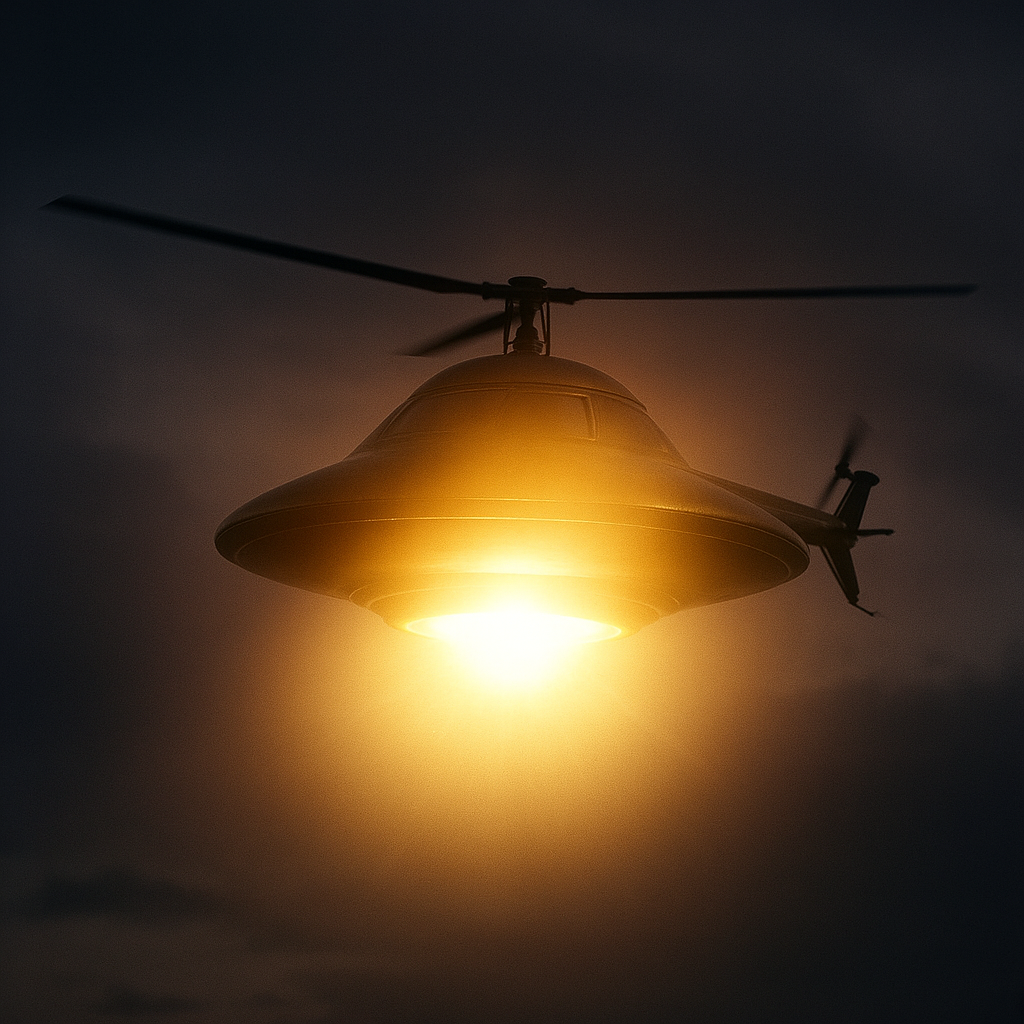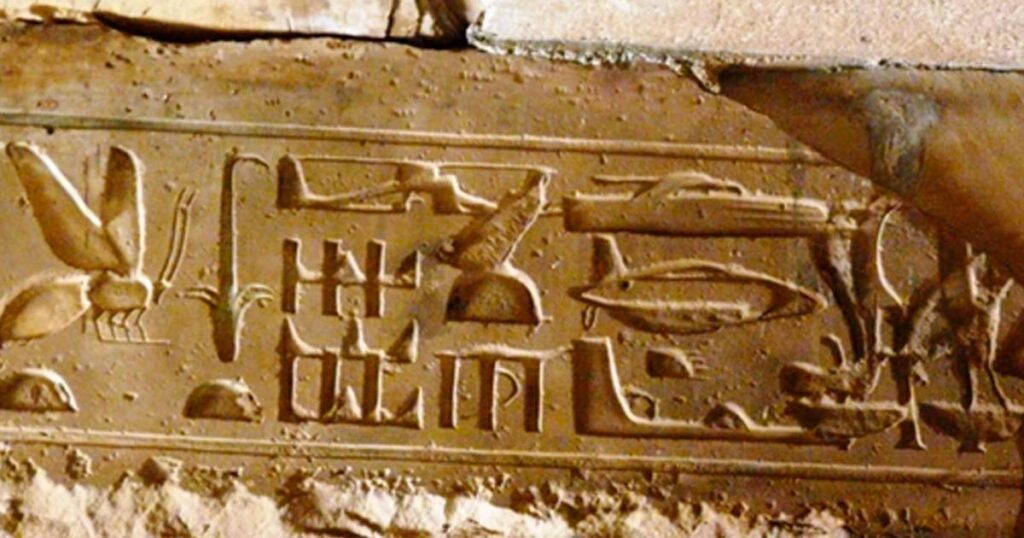When UFOs Pretend to Be Helicopters

There have been several notable UFO sightings where the unidentified objects appeared to imitate helicopters, either in sound, shape, or behavior. This kind of mimicry raises intriguing questions about perception, psychological manipulation, and the true nature of these phenomena. The recurring theme of helicopter mimicry in UFO reports has become a focal point in modern ufology.
One of the most iconic cases is the Cash–Landrum Incident (1980, Texas), where witnesses described a burning, diamond-shaped UFO escorted by over 20 helicopters. The intense light, heat, and coordinated aerial movement led some to suspect either a government operation or an attempt by the object to blend in with familiar aircraft. Dr. Eric Davis later suggested that these helicopters could have been a form of UAP mimicry, manipulating human perception to induce the appearance of helicopters.
Another strong example comes from the Hudson Valley sightings of the 1980s in New York. People saw massive V-shaped craft with lights that silently hovered or moved slowly, giving the illusion of multiple helicopters flying in formation. Many mistook them for military exercises, yet the size, silence, and behavior didn’t align with known helicopter capabilities.
During the Belgian UFO wave (1989–1990), triangle-shaped craft were spotted emitting low humming sounds or even rotor-like audio, which seemed to mimic helicopters. However, witnesses consistently noted that these craft moved in ways no helicopter could, including instantaneous directional shifts and silent hovering at close range.
In South Africa during the 1990s, multiple reports surfaced of strange flying objects that mimicked the sound of helicopters or small engines but lacked any visible rotors or propulsion systems. Witnesses often mentioned a low, mechanical hum or a sound like a small car engine—familiar, yet out of place in the sky.
A crucial addition is the broader “black helicopter” phenomenon, reported since the 1970s across North America. Many sightings describe aircraft that look and sound like helicopters but behave in impossible ways—hovering with no noise, vanishing instantly, or maneuvering with unnatural agility. Some researchers believe these aren’t helicopters at all but advanced craft—possibly non-human—that use mimicry as camouflage to avoid detection, evade suspicion, or psychologically manipulate witnesses.
Further supporting the mimicry theory, the 1994 Red Bank, New Jersey UFO sighting involved a craft that emitted jet-like sounds but hovered and moved with plasma-like lights. Witness descriptions included deliberate, calculated movements that mimicked aircraft behavior but with anomalies no conventional helicopter could perform.
Adding to the contemporary body of evidence, a remarkable video captured on April 24, 2025, in Whetstone, Arizona, shows a mysterious aerial object at 19:52h local time. Initially resembling a standard helicopter in behavior, the object displayed unusual flight characteristics that challenge conventional explanations. The sighting’s timing, lighting, and maneuvers lend further weight to the idea that some UAPs may intentionally mirror the appearance and operation of human aircraft to mask their true nature.
Recent reports from 2024 in New Jersey, near Round Valley Reservoir, describe incidents where a helicopter spotlighted a drone-like object that then vanished and reappeared with bright lights, possibly engaging in helicopter-like mimicry. This suggests that the phenomenon continues into modern times, adapting to contemporary human technology expectations.
Another noteworthy sighting emerged from Poland on March 17, 2025. Witnesses captured footage of an unusual airborne object that initially seemed consistent with helicopter movement. However, closer observation revealed discrepancies in light patterns, sound, and motion, suggesting a deliberate mimicry effort by something far beyond traditional aviation technology. Such global incidents reinforce that this phenomenon is not isolated to one region but appears to be a widespread tactic.
Expert opinions, particularly from figures like Dr. Eric Davis, propose that UAPs may use adaptive mimicry to appear as familiar objects—aircraft, natural phenomena, or even helicopters—to hide their true nature.
The recurring pattern of helicopter mimicry in UFO sightings opens profound questions: Are we dealing with highly advanced surveillance craft, psychological operations, or something even more mysterious? And why choose the helicopter—a symbol of authority and mobility—as the disguise?
Whether these are government experiments, reverse-engineered machines, or non-human craft using illusion to conceal their presence, the phenomenon of UFOs behaving like helicopters deserves deeper attention. It represents not just a curiosity, but a potential clue into how these intelligences interact with our reality—and our minds.
Adding to this growing body of evidence, the December 2024 incident near Round Valley Reservoir involved a solid, sphere-like object that initially appeared to mimic a helicopter. Witnesses reported a bright spotlight effect and unusual lighting patterns, but noted the absence of typical helicopter noise. The object’s ability to blend into expectations of human aircraft before revealing its anomalies further highlights the sophisticated mimicry strategies that some UAPs seem to employ.
And perhaps the most twisted layer in this mimicry puzzle: former President Donald Trump, during a 2024 interview, casually confirmed that some of these so-called “pirate aircraft” operating in U.S. airspace have been authorized by the FAA for research and “various other reasons.” According to an investigation into the incident, many of these unidentified craft—sometimes posing as helicopters and sometimes planes—operate under highly classified exemptions and may even be tied to multi-agency black budget projects. If true, this suggests that the government not only knows these objects are flying among us but may be complicit in helping them stay hidden in plain sight.

Further back in time, one of the most controversial and captivating images tied to this discussion is a section of hieroglyphs from the Temple of Seti I at Abydos, Egypt. Believed to date back to approximately 3,000 years ago during the New Kingdom period, this ancient stone relief appears to show aerial vehicles that strikingly resemble modern helicopters, submarines, and even futuristic aircraft. While mainstream Egyptologists attribute this phenomenon to a case of palimpsest—where older carvings were overwritten by newer ones—many alternative researchers interpret the imagery as evidence of ancient contact with advanced technology or non-human intelligences. Within the context of helicopter mimicry, this carving fuels speculation that such aerial phenomena may not be recent inventions at all, but rather part of a recurring presence that has adapted its disguise across millennia to match human expectations.


